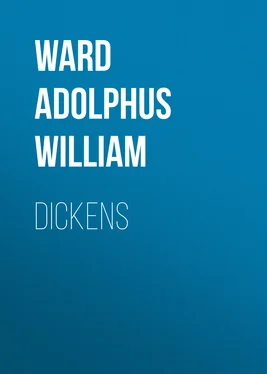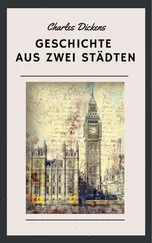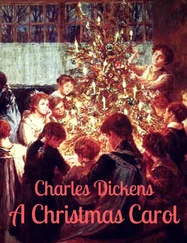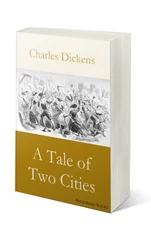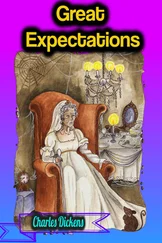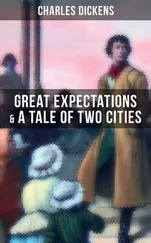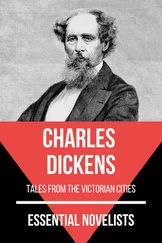Adolphus Ward - Dickens
Здесь есть возможность читать онлайн «Adolphus Ward - Dickens» — ознакомительный отрывок электронной книги совершенно бесплатно, а после прочтения отрывка купить полную версию. В некоторых случаях можно слушать аудио, скачать через торрент в формате fb2 и присутствует краткое содержание. Жанр: Биографии и Мемуары, foreign_antique, на английском языке. Описание произведения, (предисловие) а так же отзывы посетителей доступны на портале библиотеки ЛибКат.
- Название:Dickens
- Автор:
- Жанр:
- Год:неизвестен
- ISBN:нет данных
- Рейтинг книги:5 / 5. Голосов: 1
-
Избранное:Добавить в избранное
- Отзывы:
-
Ваша оценка:
- 100
- 1
- 2
- 3
- 4
- 5
Dickens: краткое содержание, описание и аннотация
Предлагаем к чтению аннотацию, описание, краткое содержание или предисловие (зависит от того, что написал сам автор книги «Dickens»). Если вы не нашли необходимую информацию о книге — напишите в комментариях, мы постараемся отыскать её.
Dickens — читать онлайн ознакомительный отрывок
Ниже представлен текст книги, разбитый по страницам. Система сохранения места последней прочитанной страницы, позволяет с удобством читать онлайн бесплатно книгу «Dickens», без необходимости каждый раз заново искать на чём Вы остановились. Поставьте закладку, и сможете в любой момент перейти на страницу, на которой закончили чтение.
Интервал:
Закладка:
Dickens himself entertained no high opinion of these youthful efforts; and in this he showed the consciousness of the true artist, that masterpieces are rarely thrown off at hazard. But though much of the popularity of the Sketches may be accounted for by the fact that commonplace people love to read about commonplace people and things, the greater part of it is due to genuine literary merit. The days of half-price in theatres have followed the days of coaching; “Honest Tom” no more paces the lobby in a black coat with velvet facings and cuffs, and a D’Orsay hat; the Hickses of the present time no longer quote “Don Juan” over boarding-house dinner-tables; and the young ladies in Camberwell no longer compare young men in attitudes to Lord Byron, or to “Satan” Montgomery. But the Sketches by Boz have survived their birth-time; and they deserve to be remembered among the rare instances in which a young author has no sooner begun to write than he has shown a knowledge of his real strength. As yet, however, this sudden favourite of the public was unaware of the range to which his powers were to extend, and of the height to which they were to mount.
CHAPTER II
Even in those years of which the record is brightest in the story of his life, Charles Dickens, like the rest of the world, had his share of troubles—troubles great and small, losses which went home to his heart, and vexations manifold in the way of business. But in the history of his early career as an author the word failure has no place.
Not that the Posthumous Papers of the Pickwick Club , published as they were in monthly numbers, at once took the town by storm; for the public needed two or three months to make up its mind that “Boz” was equal to an effort considerably in advance of his Sketches . But when the popularity of the serial was once established, it grew with extraordinary rapidity until it reached an altogether unprecedented height. He would be a bold man who should declare that its popularity has very materially diminished at the present day. Against the productions of Pickwick , and of other works of amusement of which it was the prototype, Dr. Arnold thought himself bound seriously to contend among the boys of Rugby; and twenty years later young men at the university talked nothing but Pickwick , and quoted nothing but Pickwick , and the wittiest of undergraduates set the world at large an examination paper in Pickwick , over which pretentious half-knowledge may puzzle, unable accurately to “describe the common Profeel-machine,” or to furnish a satisfactory definition of “a red-faced Nixon.” No changes in manners and customs have interfered with the hold of the work upon nearly all classes of readers at home; and no translation has been dull enough to prevent its being relished even in countries where all English manners and customs must seem equally uninteresting or equally absurd.
So extraordinary has been the popularity of this more than thrice fortunate book, that the wildest legends have grown up as to the history of its origin. The facts, however, as stated by Dickens himself, are few and plain. Attracted by the success of the Sketches , Messrs. Chapman & Hall proposed to him that he should write “something” in monthly numbers to serve as a vehicle for certain plates to be executed by the comic draughtsman, Mr. R. Seymour; and either the publishers or the artist suggested as a kind of leading notion, the idea of a “Nimrod Club” of unlucky sportsmen. The proposition was at Dickens’s suggestion so modified that the plates were “to arise naturally out of the text,” the range of the latter being left open to him. This explains why the rather artificial machinery of a club was maintained, and why Mr. Winkle’s misfortunes by flood and field hold their place by the side of the philanthropical meanderings of Mr. Pickwick and the amorous experiences of Mr. Tupman. An original was speedily found for the pictorial presentment of the hero of the book, and a felicitous name for him soon suggested itself. Only a single number of the serial had appeared when Mr. Seymour’s own hand put an end to his life. It is well known that among the applicants for the vacant office of illustrator of the Pickwick Papers was Thackeray—the senior of Dickens by a few months—whose style as a draughtsman would have been singularly unsuited to the adventures and the gaiters of Mr. Pickwick. Finally, in no altogether propitious hour for some of Dickens’s books, Mr. Hablot Browne (“Phiz”) was chosen as illustrator. Some happy hits—such as the figure of Mr. Micawber—apart, the illustrations of Dickens by this artist, though often both imaginative and effective, are apt, on the one hand, to obscure the author’s fidelity to nature, and on the other, to intensify his unreality. Oliver Twist , like the Sketches , was illustrated by George Cruikshank, a pencil humourist of no common calibre, but as a rule ugly with the whole virtuous intention of his heart. Dickens himself was never so well satisfied with any illustrator as with George Cattermole ( alias “Kittenmoles”), a connection of his by marriage, who co-operated with Hablot Browne in Master Humphrey’s Clock ; in his latest works he resorted to the aid of younger artists, whose reputation has since justified his confidence. The most congenial of the pictorial interpreters of Dickens, in his brightest and freshest humour, was his valued friend John Leech, whose services, together occasionally with those of Doyle, Frank Stone, and Tenniel, as well as of his faithful Stanfield and Maclise, he secured for his Christmas books.
The Pickwick Papers , of which the issue was completed by the end of 1837, brought in to Dickens a large sum of money, and after a time a handsome annual income. On the whole this has remained the most general favourite of all his books. Yet it is not for this reason only that Pickwick defies criticism, but also because the circumstances under which the book was begun and carried on make it preposterous to judge it by canons applicable to its author’s subsequent fictions. As the serial proceeded, the interest which was to be divided between the inserted tales, some of which have real merit, and the framework, was absorbed by the latter. The rise in the style of the book can almost be measured by the change in the treatment of its chief character, Mr. Pickwick himself. In a later preface, Dickens endeavoured to illustrate this change by the analogy of real life. The truth, of course, is that it was only as the author proceeded that he recognised the capabilities of the character, and his own power of making it, and his book with it, truly lovable as well as laughable. Thus, on the very same page in which Mr. Pickwick proves himself a true gentleman in his leave-taking from Mr. Nupkins, there follows a little bit of the idyl between Sam and the pretty housemaid, written with a delicacy that could hardly have been suspected in the chronicler of the experiences of Miss Jemima Evans or of Mr. Augustus Cooper. In the subsequent part of the main narrative will be found exemplified nearly all the varieties of pathos of which Dickens was afterwards so repeatedly to prove himself master, more especially, of course, in those prison scenes for which some of our older novelists may have furnished him with hints. Even that subtle species of humour is not wanting which is content to miss its effect with the less attentive reader; as in this passage concerning the ruined cobbler’s confidences to Sam in the Fleet:
“The cobbler paused to ascertain what effect his story had produced on Sam; but finding that he had dropped asleep, knocked the ashes out of his pipe, sighed , put it down, drew the bedclothes over his head, and went to sleep too.”
Читать дальшеИнтервал:
Закладка:
Похожие книги на «Dickens»
Представляем Вашему вниманию похожие книги на «Dickens» списком для выбора. Мы отобрали схожую по названию и смыслу литературу в надежде предоставить читателям больше вариантов отыскать новые, интересные, ещё непрочитанные произведения.
Обсуждение, отзывы о книге «Dickens» и просто собственные мнения читателей. Оставьте ваши комментарии, напишите, что Вы думаете о произведении, его смысле или главных героях. Укажите что конкретно понравилось, а что нет, и почему Вы так считаете.
